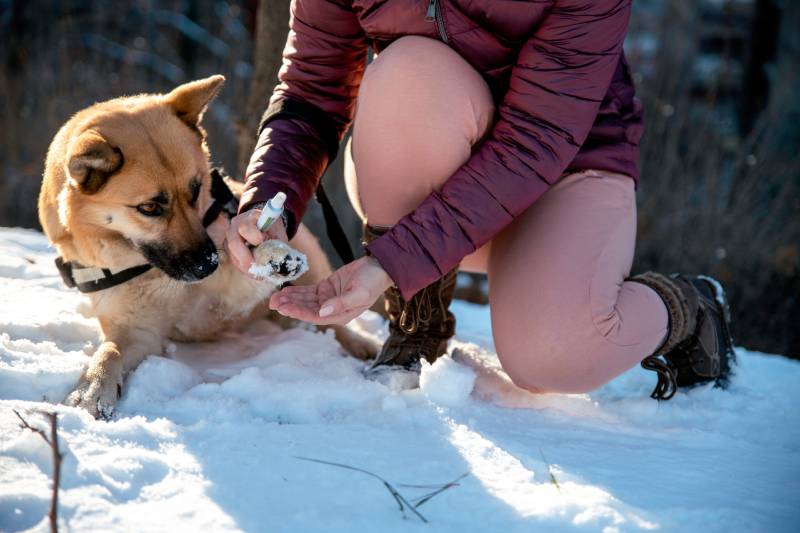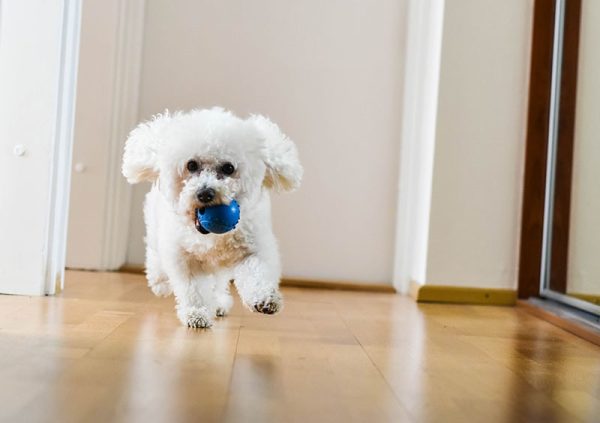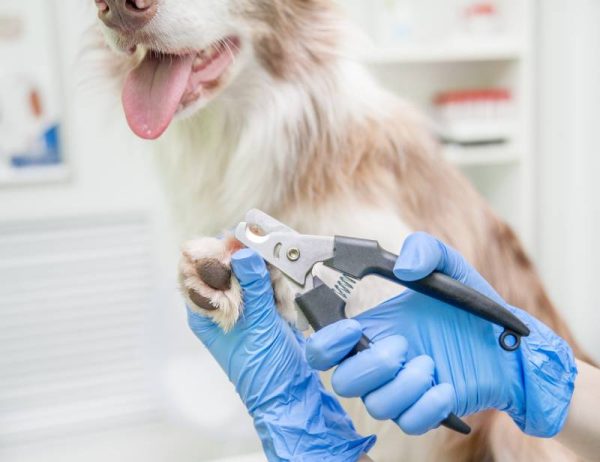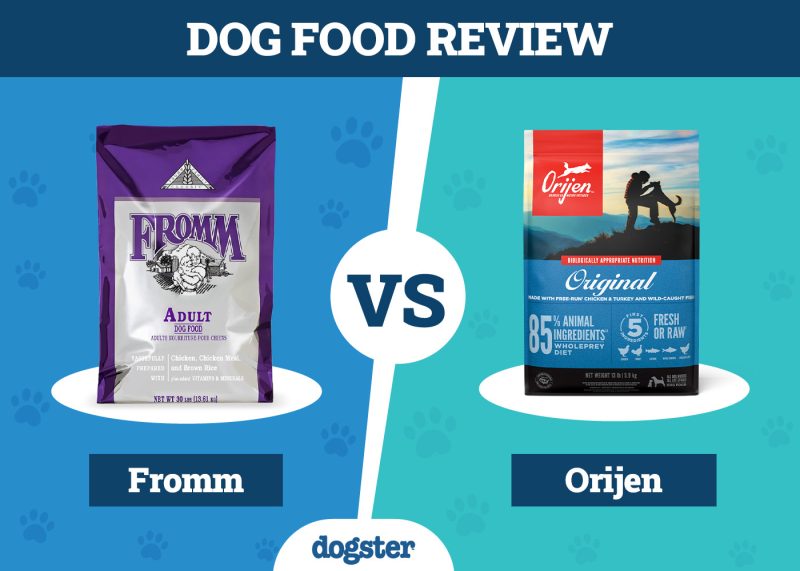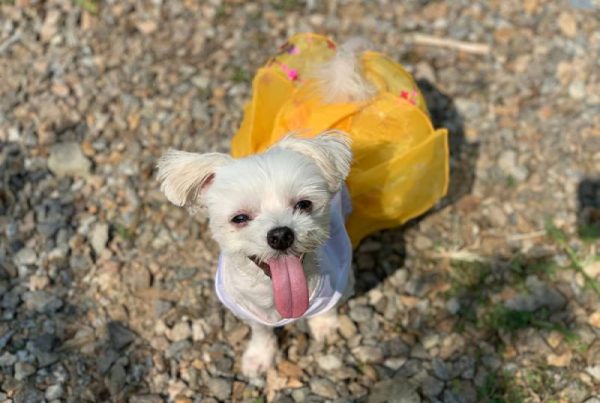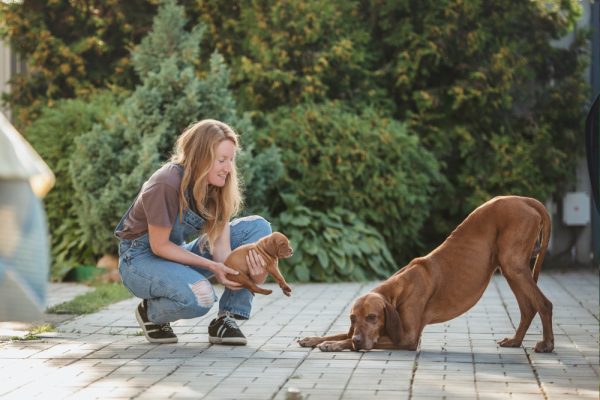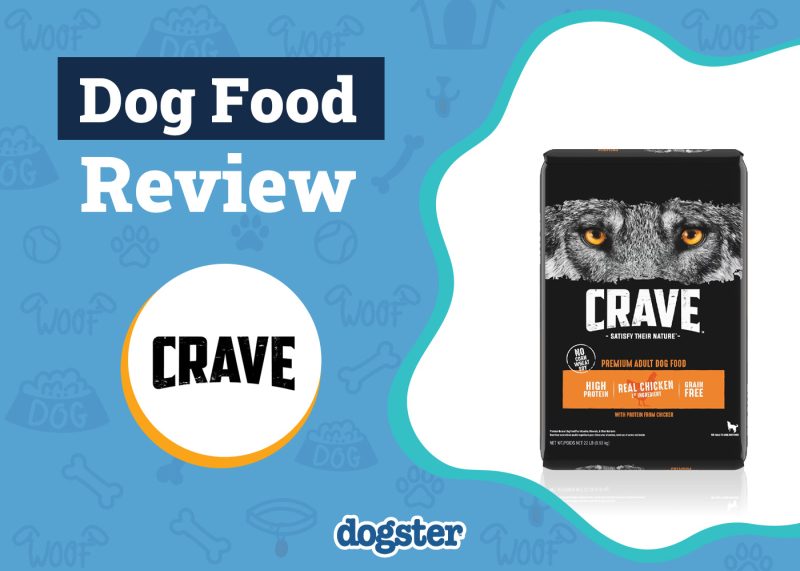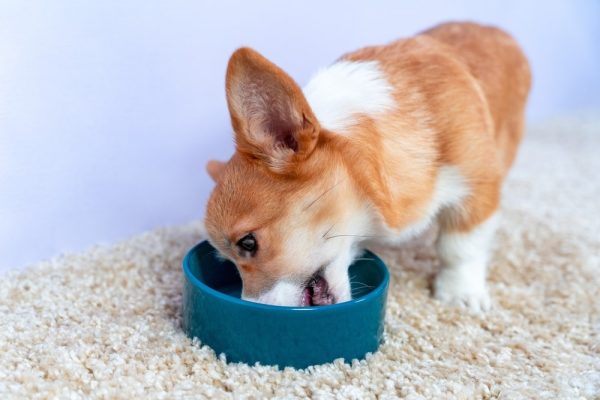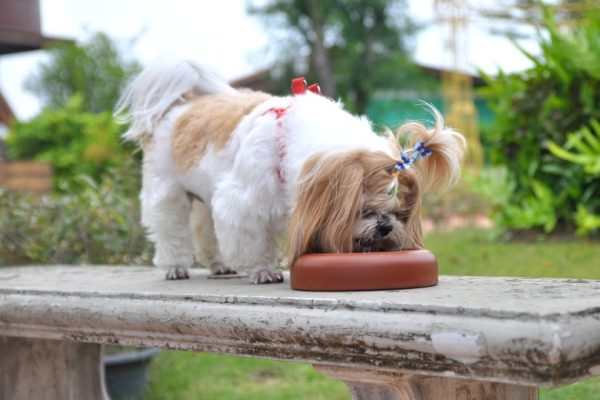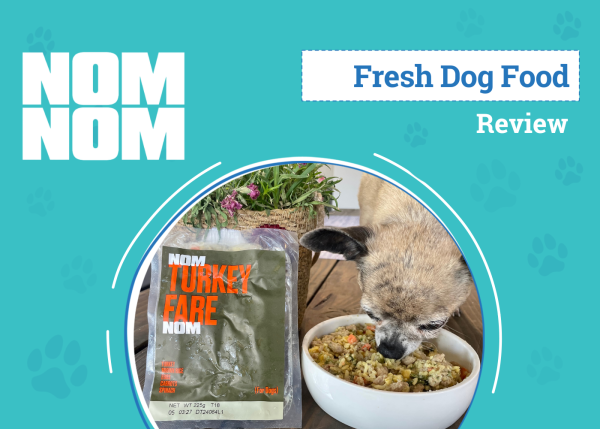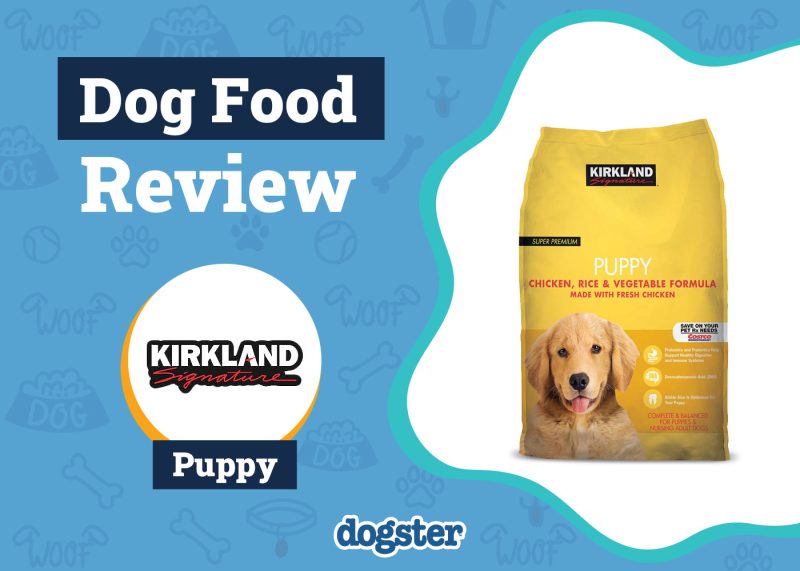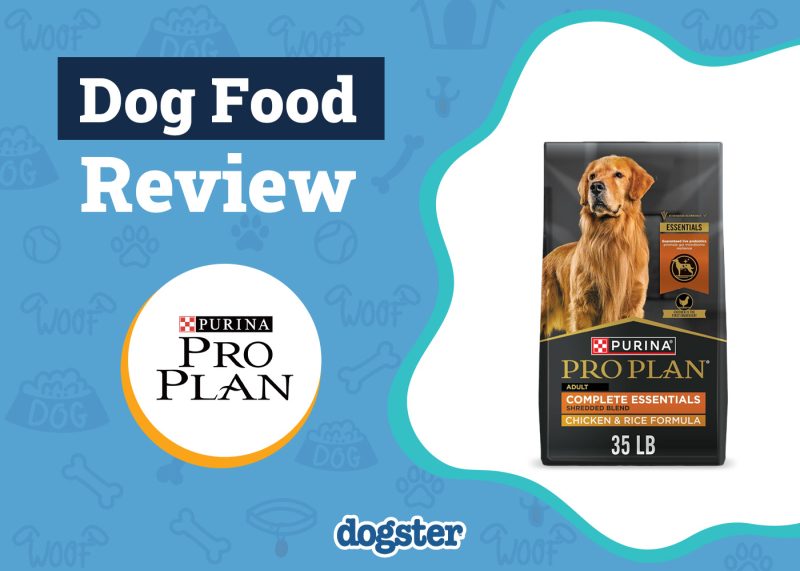In this article
Not all dogs like snow but many do! Even those that don’t like being in the snow may not be able to escape it when they need to relieve themselves. No matter the reason for your dog being out in the snow, it can be easy for snow to stick to their fur. The heat of their body starts melting the snow, which can create little snowballs that clump in their coat. Both snow and snowballs should be removed as quickly as possible once your pup is back in the house. But what’s the best way to get snow off a dog’s fur and paws? There are a few options to consider, depending on the situation.
Why It’s Important to Get Snow and Snowballs Off Your Dog’s Fur and Paws
Snow can dry out your dog’s paws and skin, which can result in cracks, sores, and even bacterial infections. The snow can irritate the skin between your dog’s toes too, making it tough for them to comfortably walk until the irritation goes away. Sometimes, salts, vehicle oil, and other contaminants on the ground get mixed in with the snow and in turn, get stuck in your dog’s fur.
One important reason to remove snow and snowballs from your dog’s fur and paws as soon as possible after they get out of the snow is to minimize the risk of them developing frostbite and hypothermia. Both conditions can quickly become serious problems.
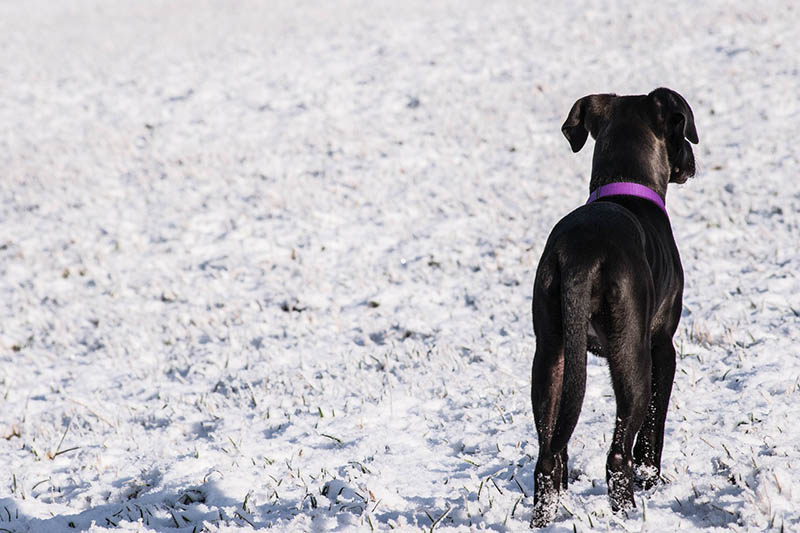
- Trembling
- Pale or gray skin
- Signs of pain when being petted or touched
- Swelling
- Cold skin
- Scabbing/blisters
- Shivering
- Weakness
- Lethargy
- Loss of appetite
- Fix Dilated pupils
- Slow heart and breathing rate
- Stiff muscles
- Disorientation

The 5 Ways to Get Snow and Snowballs Off Your Dog’s Fur and Paws
There are a few different techniques that people use to get snow off their dogs after they come in from an outdoor jaunt or potty break. There is no one-size-fits-all method, however, so you might need to try multiple options before determining what works best for you and your pup.
1. Utilize a Kitchen Whisk
One easy way to get light snow and small snowballs off your dog’s body and the tops of their paws is to lightly run a whisk over their fur. Unlike a brush that could push snow deeper into your dog’s fur, a whisk gently pulls the snow out and away from the fur. This technique might sound funny but it can work wonders! It’s a good idea to do this snow-removal technique over a towel, plastic bag, or on a covered doorstep so the snow does not get on your carpet inside. This YouTube video offers a visual explanation of how the process works.
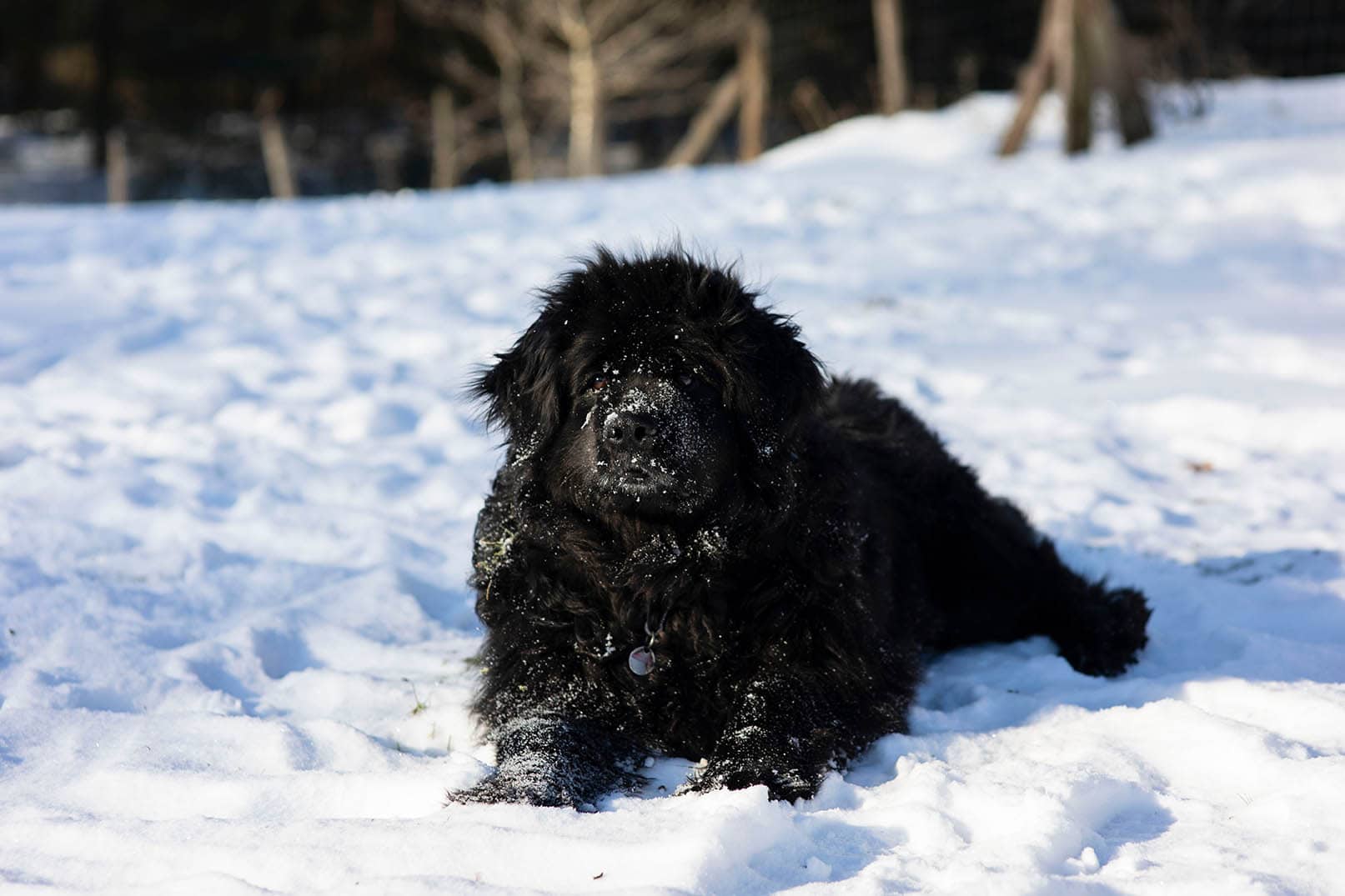
2. Start Pulling With Your Fingers
If a whisk isn’t working as well as you would like or you don’t have any tools available to work with, you can get rid of snow and snowballs by pulling them out with your fingers. Simply brushing off the snow with your palm should get rid of most of it. You may have to use your fingers to gently grab a hold of solid snowballs and work them off the fur with the help of your hand’s warmth. Lightly rub the snowballs with your fingers to have them melt away as you work.
3. Pull Out the Hair Dryer
A great way to melt large snowballs and those stuck deep in the fur is to treat your pup to a blow-drying session. Note that it is extremely important to keep the blow dryer on its lowest setting and at least a foot away from your pup while working to ensure that you don’t overheat them or even burn their skin. You can use a brush or your hands to remove the snow from your dog’s fur as it melts under the blow dryer’s heat.

4. Rub Your Pup Down With a Towel
If the snow and/or snowballs on your dog’s fur and paws are minimal, try simply rubbing them down with a towel that is fresh out of the dryer. The warmth of the towel will help accelerate melting and provide your dog with extra comfort. The rubbing action will help dislodge the snow from the fur so it falls off and away from your pup. Finally, the towel will also help dry your pup off, so they are less likely to experience hypothermia.
5. Consider a Lukewarm Bath
You can always pop your pup in a lukewarm bath to get rid of any snow and snowballs. Make sure the water is not too warm so it doesn’t shock your dog’s system. It should be at room temperature to the touch. If a bath stresses out your doggy due to their coldness and discomfort, try using a showerhead and working in small sections until all the snow has melted away. If possible, work with someone else, as they can rub the fur down as you work.


How to Protect Your Pup From Getting Snow on Their Fur and Paws in the First Place
There are a few things that you can do to keep snow from building up on your dog’s fur and paws so you don’t have to worry as much about getting it off when you come inside from the elements. First, consider investing in a pair of good dog boots. They will help protect your dog’s paws from the snow and prevent it from getting between their toes.
Keep in mind that most dogs need time to get used to the boots before they are comfortable walking around in them. So, start slowly, and put on just one boot for a few minutes at a time. Once your dog gets used to one boot, put two on. Continue doing this until they seem okay when wearing all four boots for at least 5 minutes in the house. At this point, they should be ready for fun in the snow!
Second, you can outfit your dog with a sweater, coat, or snowsuit to keep snow off their body. While clothes may not keep all the snow off their fur or snowballs from forming on their legs, there should be significantly less to deal with when it’s time to go back inside the house.
Final Thoughts
Whenever a dog goes outside in the snow, the chance of them developing snowballs on their coat is high, especially for dogs with long and thick fur. Fortunately, it’s not impossible to get rid of the snow and snowballs once they come back inside. Hopefully, these tips and guidance will help make the process an easy one.
Featured Image Credit: Pearl PhotoPix, Shutterstock

